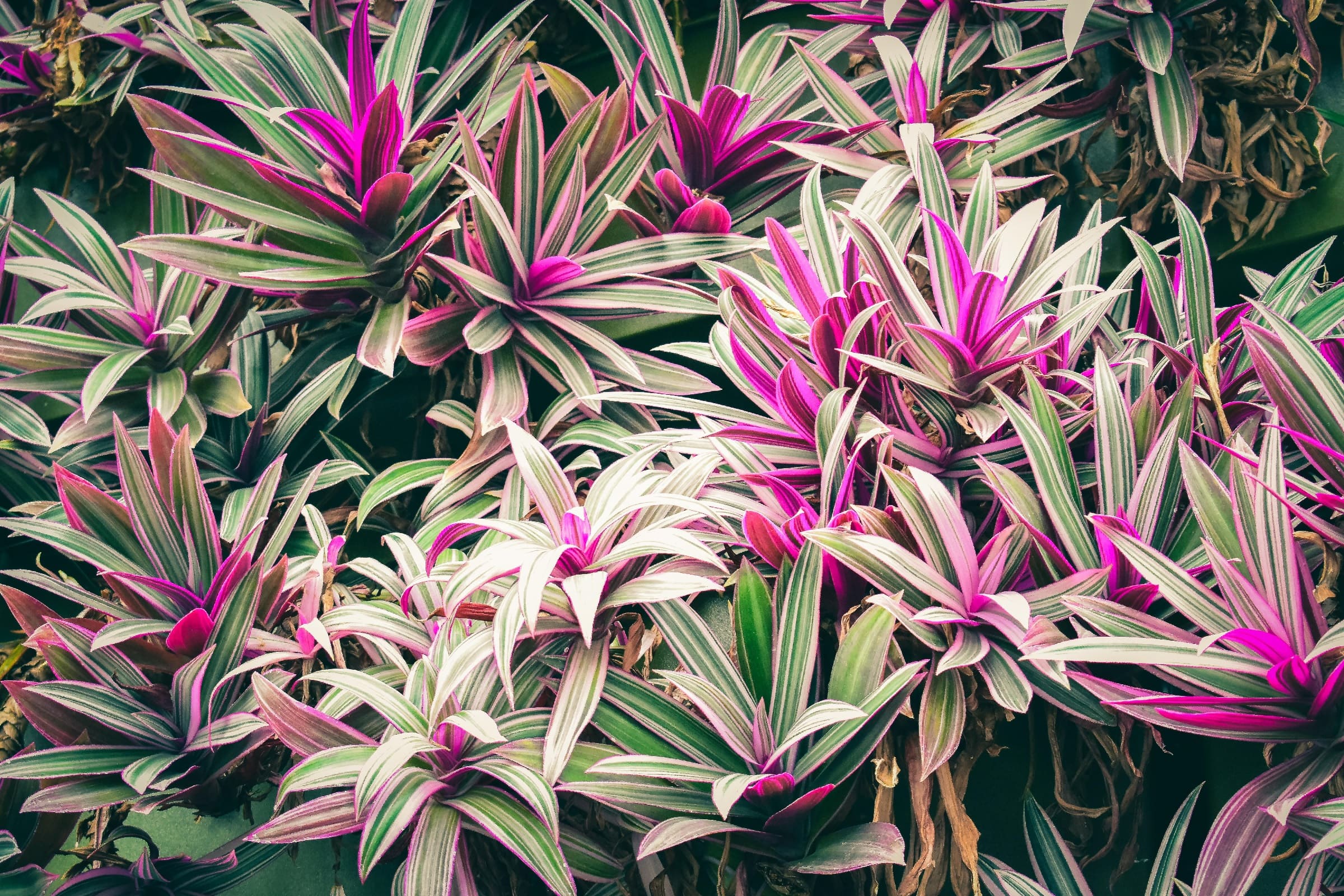Where to Plant
Outdoors: If you want to keep this species outdoors year-round, you’ll need to live in a tropical or subtropical climate with warm, frost-free areas. Choose a sheltered spot in your garden. Their long sword-like leaves can tear if they’re exposed to strong winds. Most varieties need bright, full sun, which enhances their vivid colors; however, if you live in a particularly hot area, they would benefit from partial shade to prevent leaf scorch.
To plant, dig a hole twice as wide and slightly deeper than the root ball, and then add compost and fertilizer to the soil. Place the rootball in the hole, making sure the top is level with the ground, and fill the hole. Keep the plant moist until it’s fully established, but don’t overwater.
Containers: Cordyline grows brilliantly in containers, and this is a great option for those areas where the plant will need to be brought indoors over winter. Keep the plant outdoors in containers during warmer months when any threat of frost has passed. Cordyline in a container requires a generous base (it develops a taproot), so choose a tall pot with a width of at least 6 inches greater than that of the root ball; go larger if other plants will be grown with the cordyline.
Houseplants: As a houseplant, cordyline needs a moderate level of care.
- Light: Set in bright light, but avoid direct sunlight.
- Moisture: The potting mix needs to stay moist. Reduce watering in winter; just water when the surface is dry.
- Temperature: Temperatures must be above 62°F
- Humidity: These plants prefer a high-humidity environment and may experience leaf drop without humidity.
All potted plants need rich, well-draining potting mix with a neutral pH (between 6.0 and 7.0); the exact growing medium will depend on the variety.
- For example, C. fruticosa needs a rich, well-draining, peaty potting mix (a blend of fine and coarse material with 30% to 50% organic matter) with a pH of 6.0 to 6.5.
- C. australis is less particular, but a potting mix amended with compost is preferable.
Propagating Cordyline
Cordyline can be grown by taking cuttings or from seed.
Growing these plants from seed requires patience and lots of attention, and it will take years for a seed to develop into a sizable plant, but it can be a rewarding endeavor.
The most popular method for planting cordyline plants is to take a cutting from a mature plant.
Cordyline can be propagated from cuttings (aka “Ti logs”) by using the following steps:
- Cut a 3- to 5-inch piece from a leafy head and remove all foliage. (Cut the top of the stem at a slight angle to indicate which end should be up.)
- Dip the bottom end in rooting hormone.
- Prepare a mix of sand and peat moss or perlite and dampen it.
- Insert the stem into the mix.
Alternatively, a cutting can also be placed in water to a depth of about one-third of its length.
Place the cutting in a room with a temperature of at least 60°F where it will receive bright indirect light and maintain its dampness.
Shoots will appear in 4 to 8 weeks (or longer, depending on conditions)—plant when the cuttings have four to six leaves.














Comments